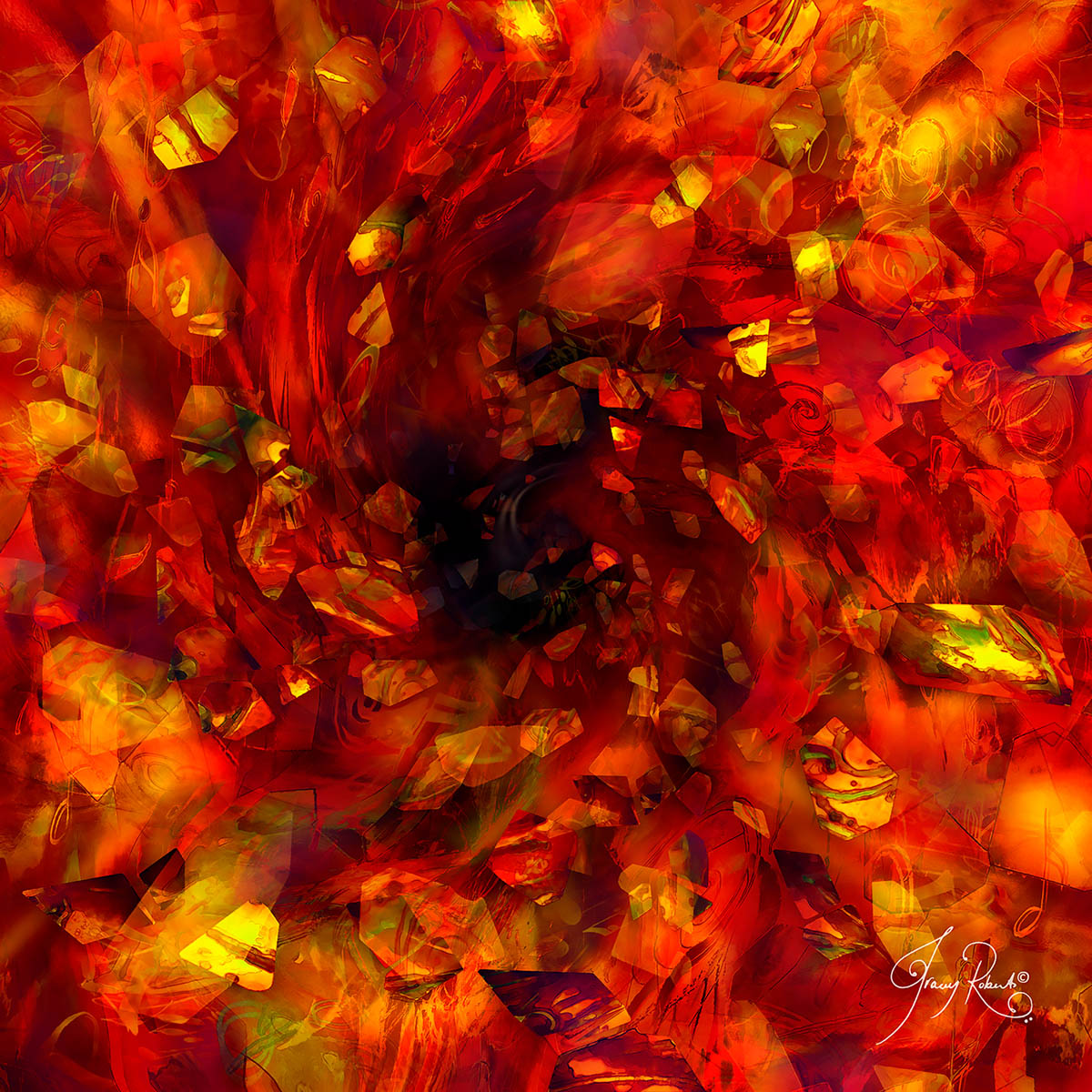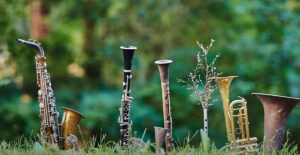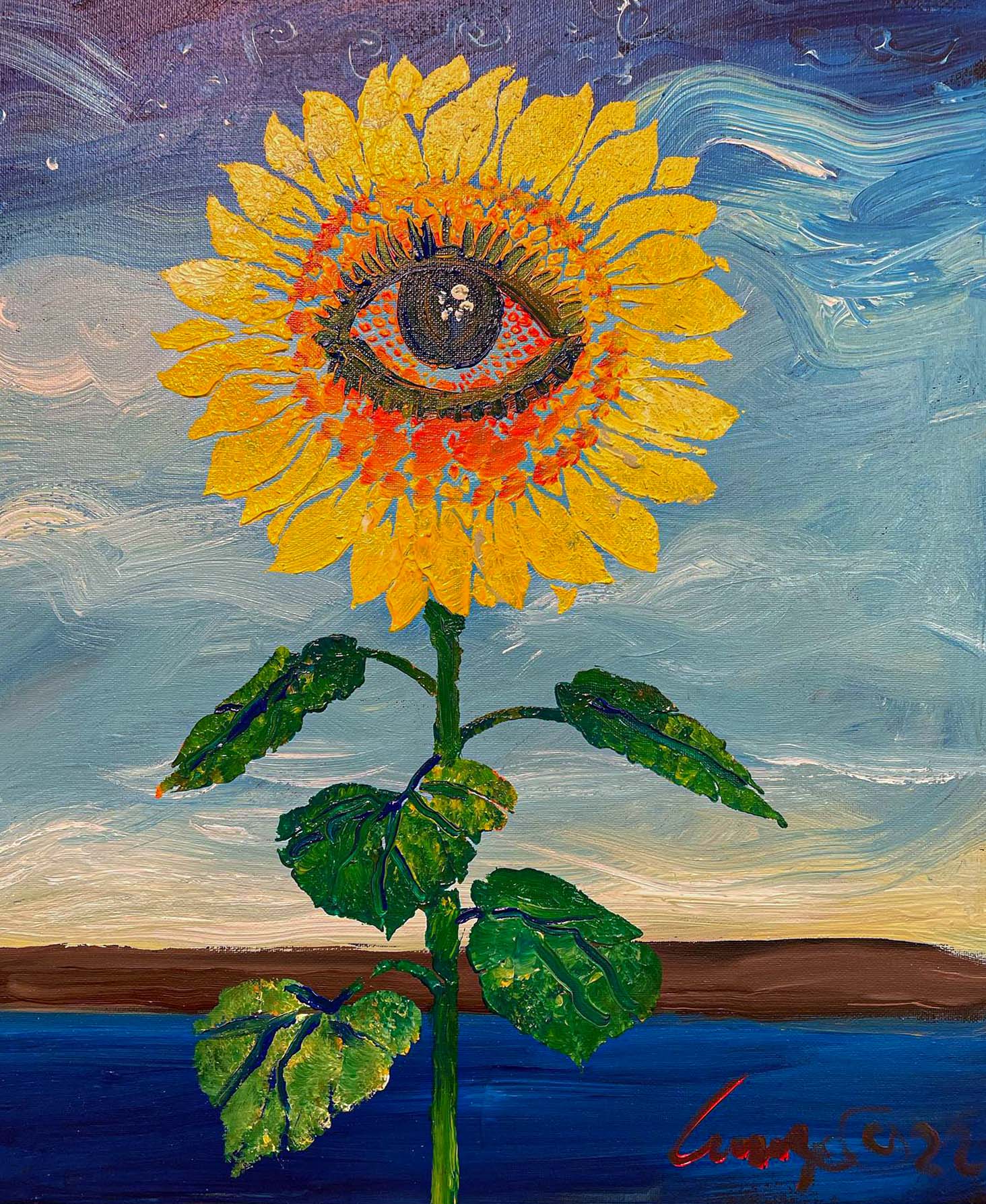Synesthesia: A neurologically based phenomenon in which stimulation of one sensory or cognitive pathway leads to automatic, involuntary experiences in a second sensory or cognitive pathway. For example, seeing colours whilst listening to music.
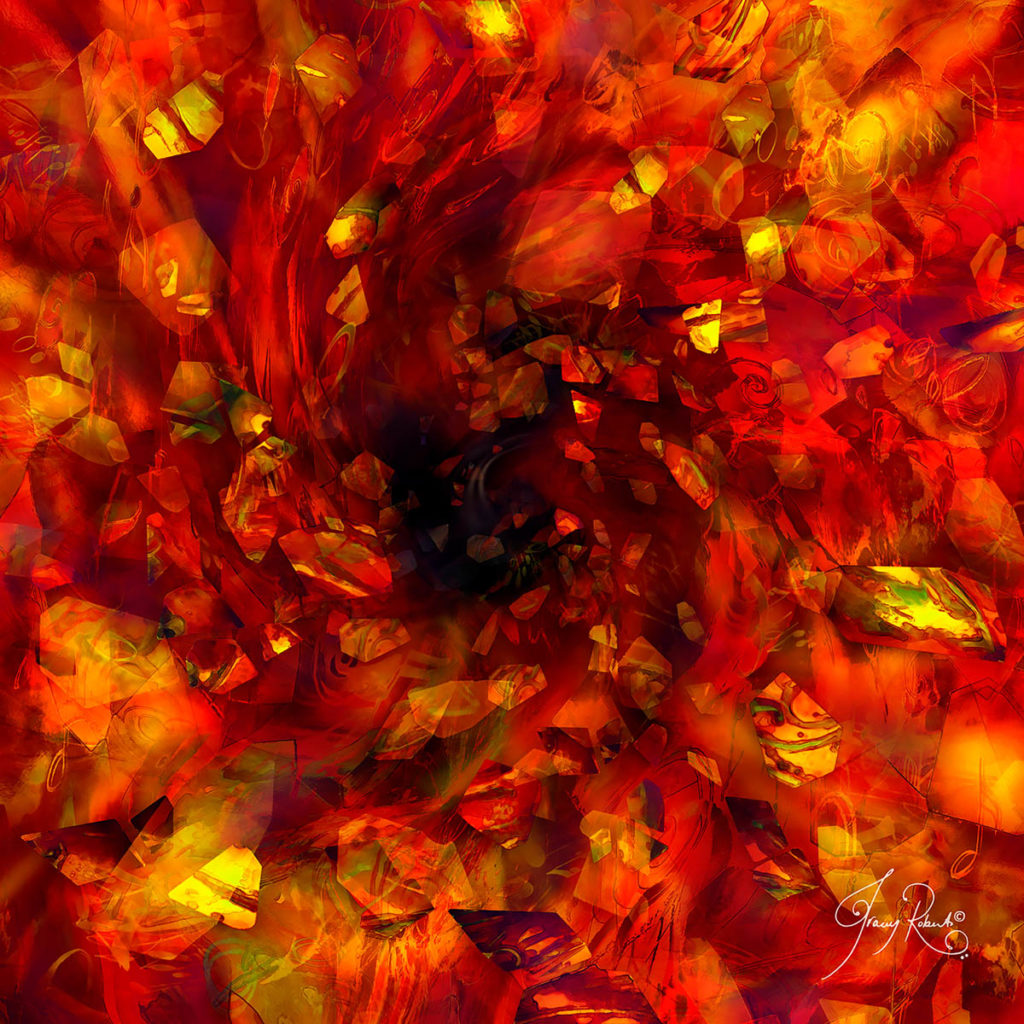
Climax
When we were little, my sisters and brother and I would play “fairytales” on the piano keys – in the darkness of the lower octaves lived threatening bears and the upper octaves were the domain of pure white, tinkly fairies…good always triumphed over evil – hence the offensive gesture known as the “one fingered salute.” The coloured middle notes (delineated by the black Cs) are my basic working area for the melodies in my song composition, including the colours of each key (city building shapes denote the business side of songwriting) while Buddha looks on and giggles in the background.
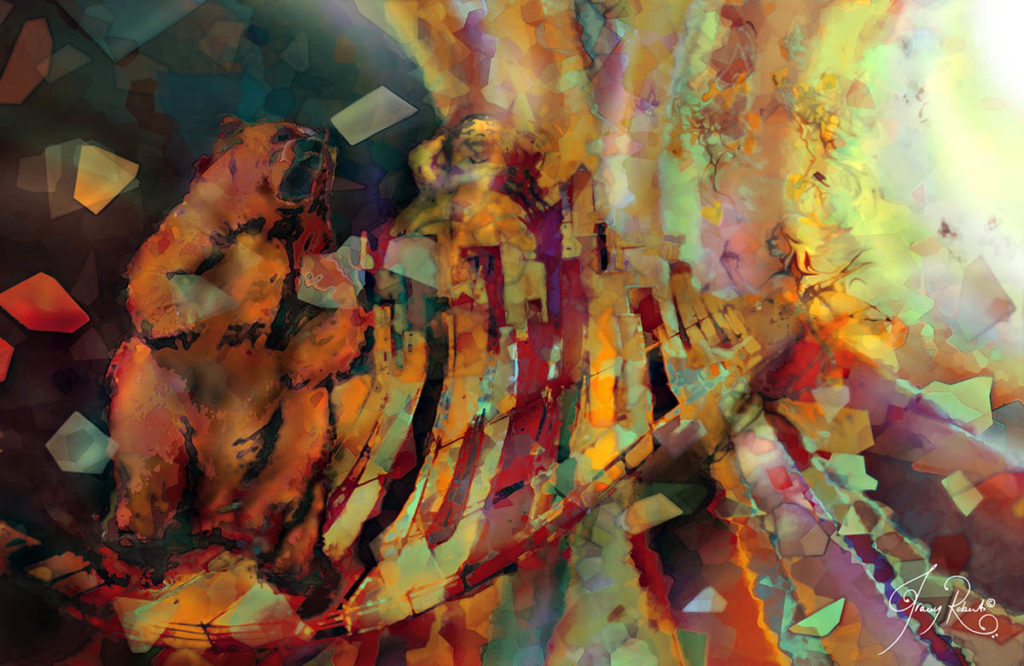
Octave Mockery
I’ve always had music-colour synesthesia, although I never knew that it had a name until about 2007. I was at the Melbourne Museum a few years back, in the Mind and Body section, when I wandered into a “black screen phone box” and listened with joyful recognition to a young man talking about how he saw colours when he listened to music and that he “loved having synesthesia” – what an epiphany it was for me! I couldn’t wait to get home and tell my family about this wonderful discovery. I was so thrilled that there was a word for this thing that I had grown up with, because it meant that I could start researching it and talking to people about it. I was also pleasantly surprised to find that some of my artist and musician friends have it too to varying degrees – some of whom I’ve known for years and we’ve never ever talked about it.
I would have to say the event at the museum was the turning point for me which began my artistic foray into the use of colour. Previously, all my illustration work for many years had always only ever been in black and white – I didn’t quite know what to do with colour or how to use it effectively, and all of a sudden it became clear through this unexpected revelation and my recognition of the connection between music and colour that had always been there, just waiting for the right moment to present itself.
I never thought about it as being particularly unusual or different – in fact I never really thought about it at all. It’s as normal and unremarkable as breathing. It doesn’t affect my vision in any way but it does add a very beautiful dimension to my appreciation of music and I feel very lucky to experience it every day of my life.
Generally I see higher pitched tones as lighter and brighter colours than lower ones which tend to be darker or more saturated – and when I hear several musical instruments together – forming a genre of music, there are many colours combined.
Ever since I can remember, listening to music or playing the piano has always been associated with colours in my mind’s eye. I see certain colours (and sometimes textures too) for certain tones – particularly in the middle octaves. As I go up the the keyboard everything turns whiter and down the lower end of the keys everything turns dark. I have specific colours for the 12 tones in the octave which vary in their brightness depending on whether they are associated with major or minor keys. So, for example, for me, the key of G is always dark green, Eb is a hot velvety pink, Am is ochre / dark yellow, Bb is a deep velvelty brown, etc. For other music-colour synesthetes, these keys or tones may have completely different colours.
Sometimes textures and shapes appear as well – crystal shapes are everywhere across many genres of music for me – hence their prevalence in my artwork.
It’s not always pleasurable – when I hear grunge or heavy metal music for example, it always looks and feels like black, grey and brown gravel grazing my skin. Needless to say, it’s not entirely comfortable to listen to it!
More soothing are the sounds and colours emanating from a clarinet which always look and sound like smooth, grey swirling tubes, or a flute – silvery blue / white.
Hearing certain musical instruments in isolation creates very strongly coloured and even shaped or textured reactions: the sound of a cello is always a full, blood red, a flute sounds thin and silver blue. Sometimes the images are very hard to describe or “grab on to”– an accordion always has a multiple set of colours – I see multiple streamers of festive colours in that case – other times the explanation seems straightforward as certain musical instruments will take on the colours of that instrument: saxes sound bulbous and bright gold, trumpets sound silver, the double bass is velvet brown.
Cool lounge jazz has always been surrounded by darkish blue (Jazz), Dixieland conjures up yellows and whites, and Latin has lots of fiery reds and oranges associated with it (Jazz 3).
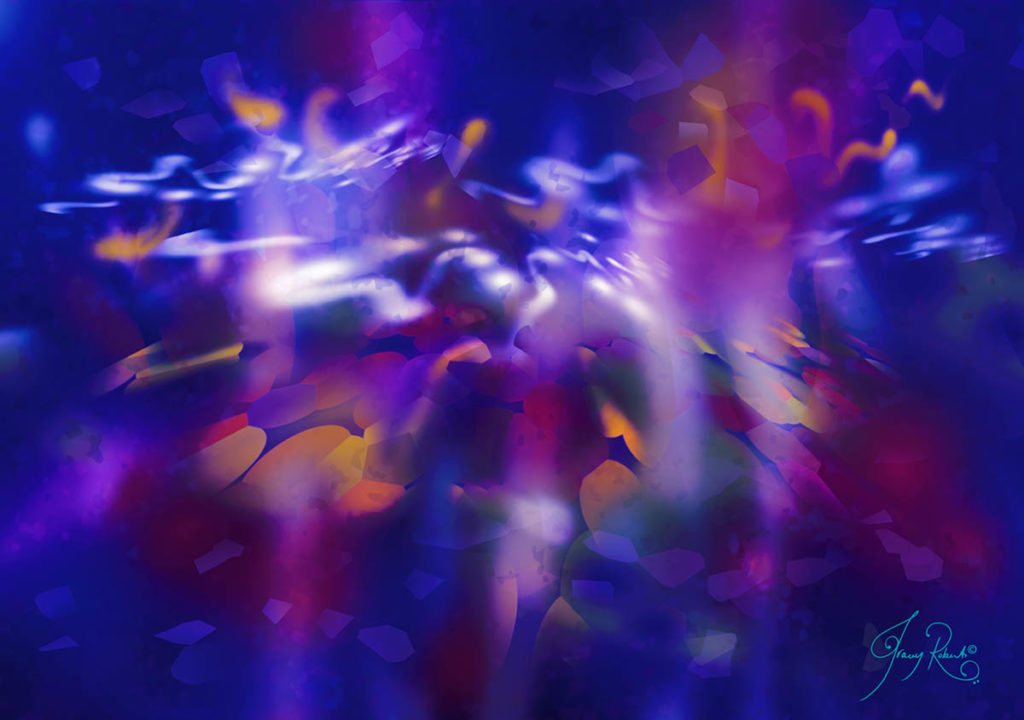
Jazz
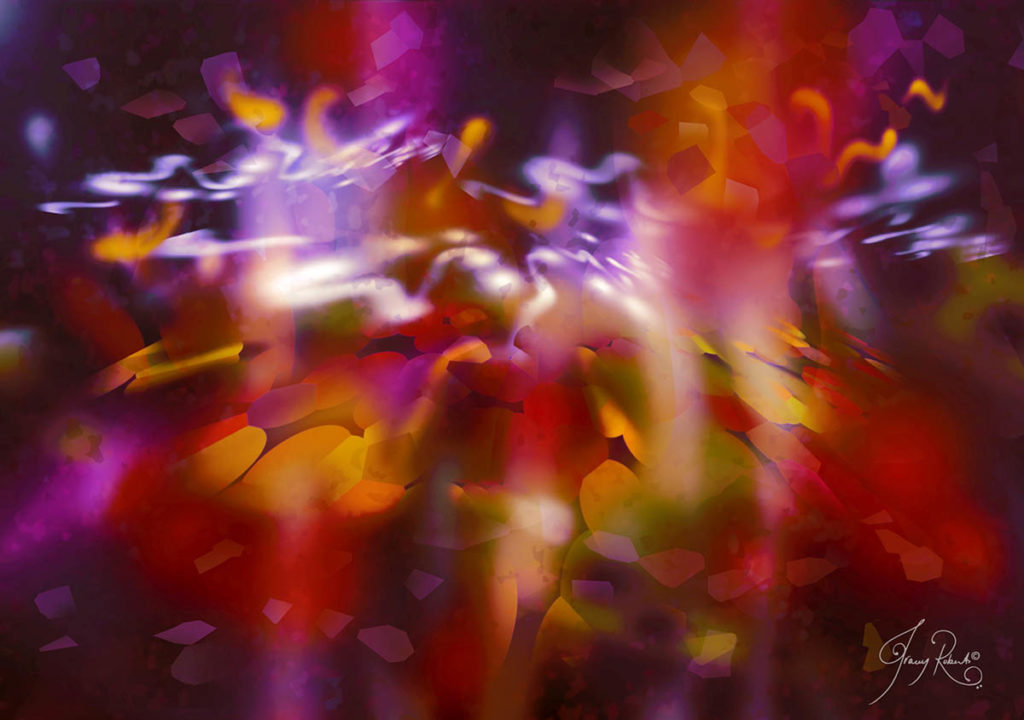
Jazz 3
The blues and purples I see when I hear the Tallis Scholars performing Gregorio Allegri’s Miserere are the colours of the crystal clear weaving harmonies and the pristine white line of that high C soaring into the heavens. The black areas represent the silences between the periods of singing. My synesthetic interpretation also includes a faceless, hooded woman praying and the faces of at least eleven choristers singing this hauntingly beautiful piece of sacred music. Written in the 1600s, it apparently became so famous that by the mid 1800s the Papacy forbade anyone to sing it outside the Sistine Chapel in order to enhance the reputation of the Papal choir. Allegedly, the music finally escaped when Mozart at age fourteen wrote it down from memory. Thank you, Amadeus!
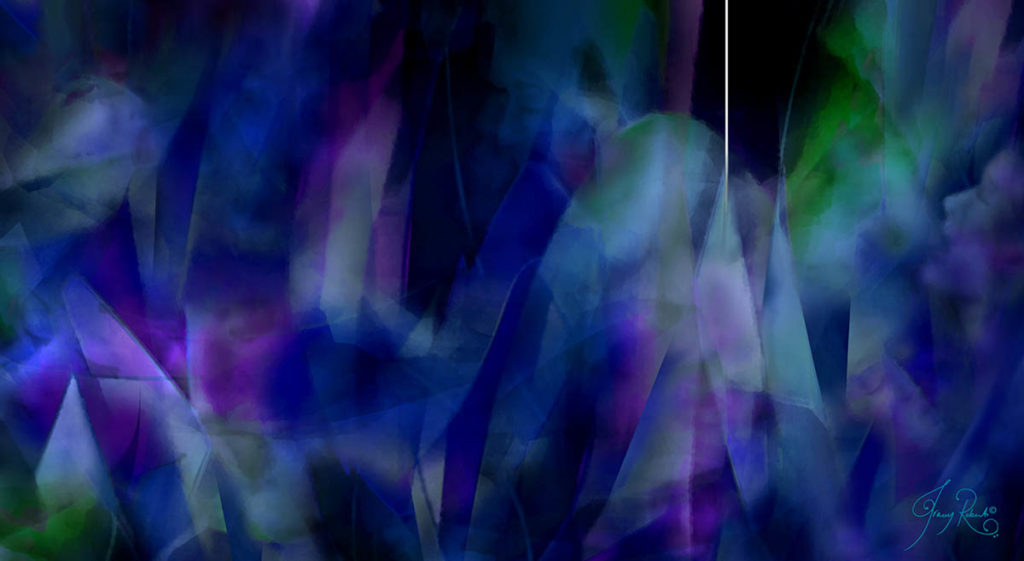
Allegri’s High C
“Colour is the keyboard, the eyes are the harmonies, the soul is the piano with many strings. The artist is the hand that plays, touching one key or another, to cause vibrations in the soul.” —Wassily Kandinsky artist, cellist and synesthete.
The great Russian-born visual artist, Wassily Kandinsky, who was also a musician, used color in a highly theoretical way associating tone with timbre (the sound’s character), hue with pitch, and saturation with the volume of sound, all ideas which make complete sense to me. Isaac Newton was intrigued by the concept that colour and musical frequencies could be correlated, however, I have read about and spoken to people with music-colour synesthesia who are adamant about their particular fusion of the senses and, for example, colours we see for the same tones are completely different.
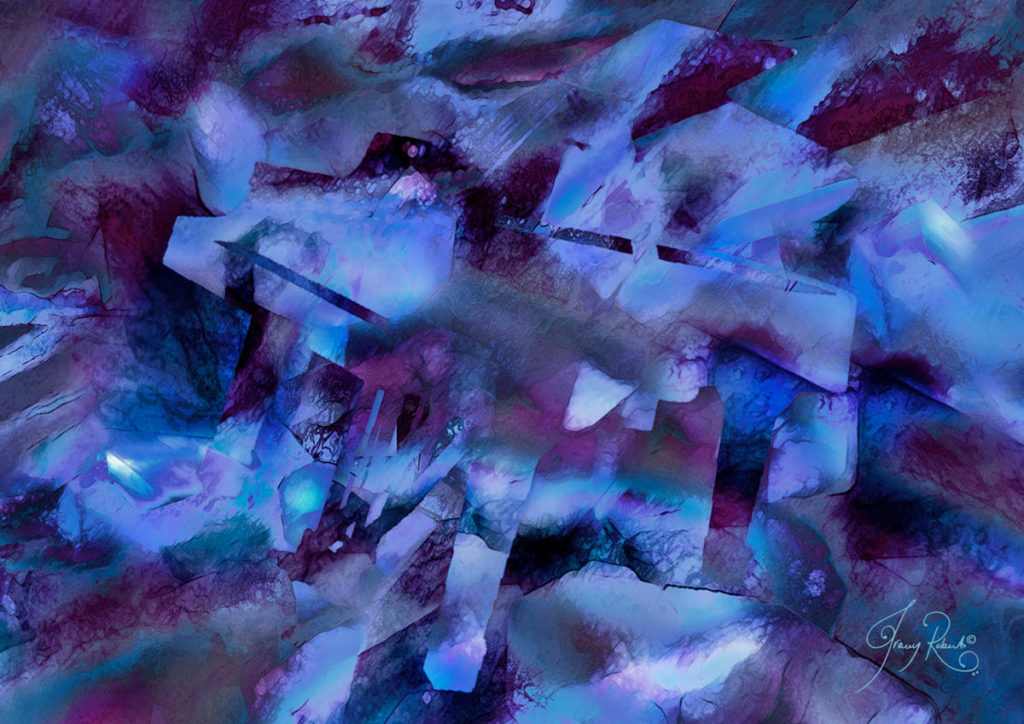
Discombobulation in Dm
Bouzouki Onions
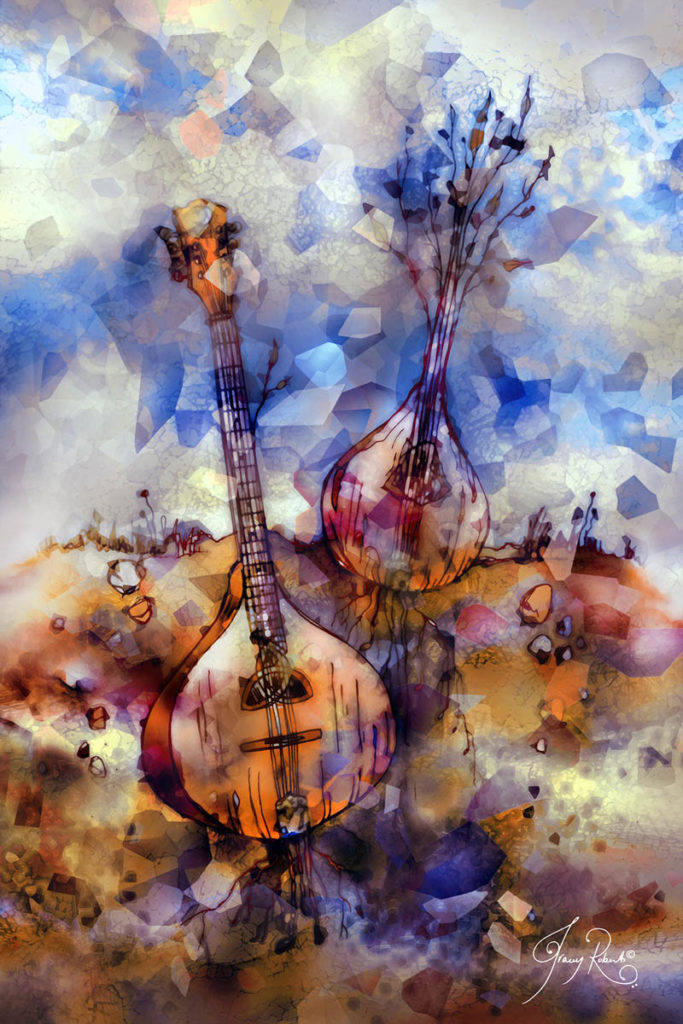
Covidity
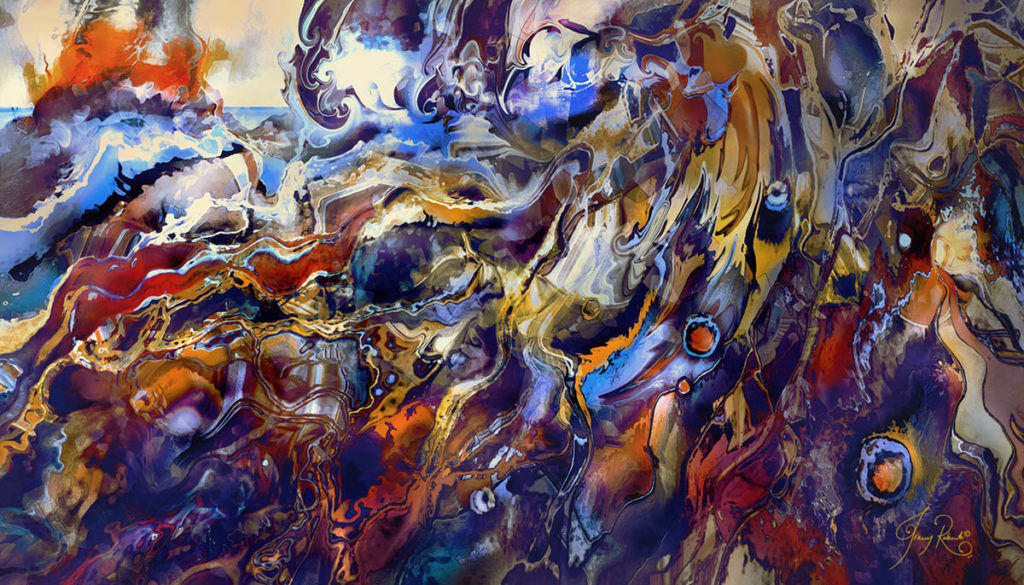
The Baton
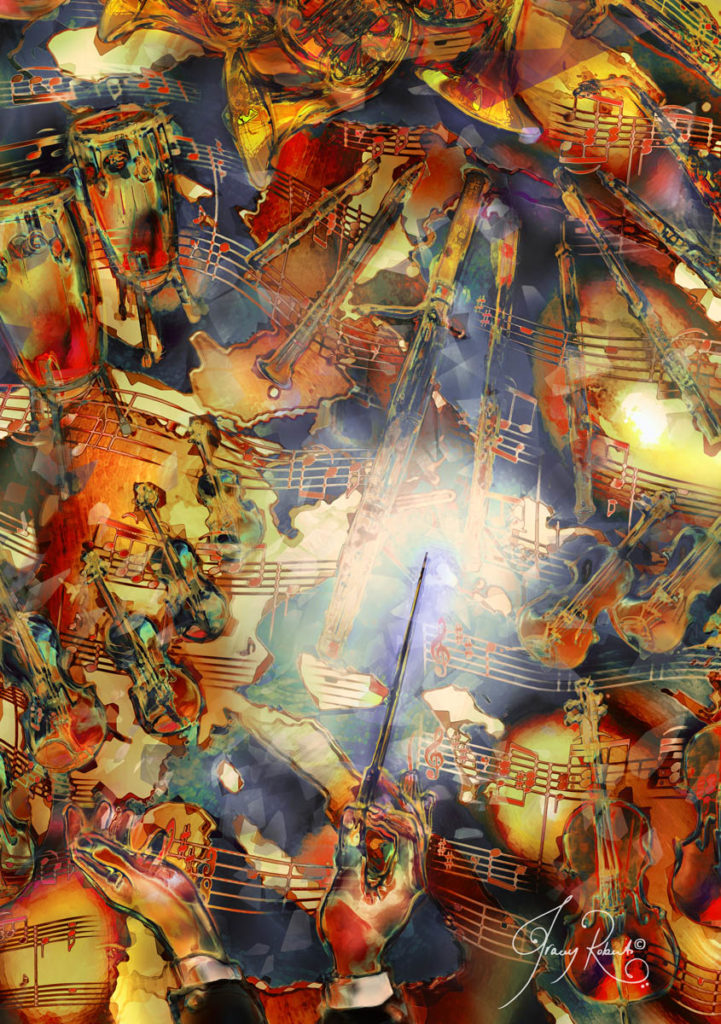
Autumn Uke
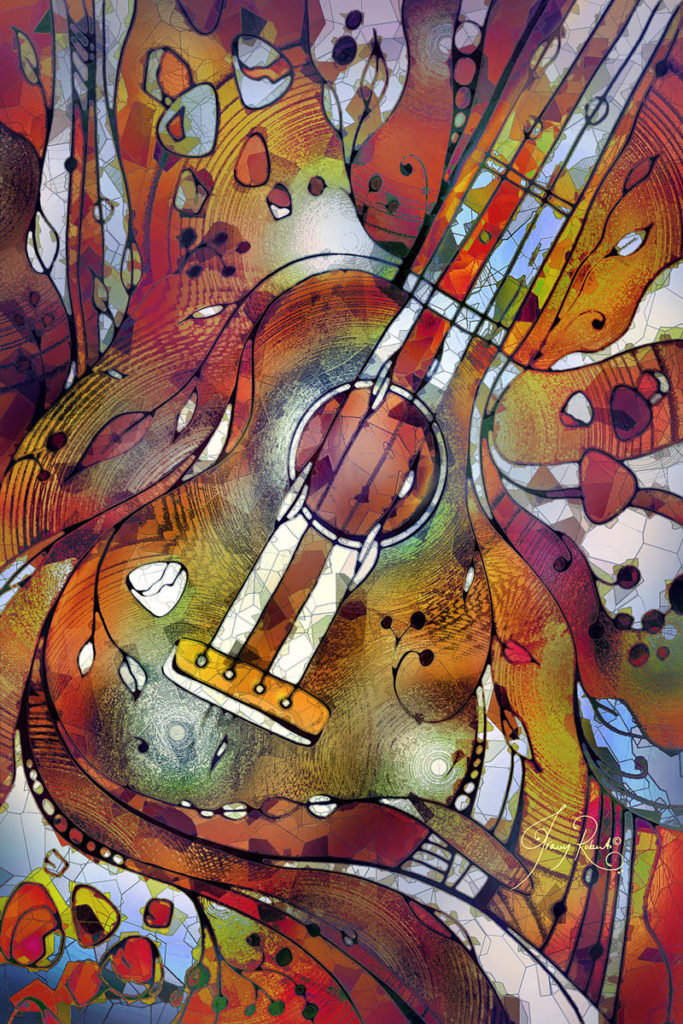
Piano Fortetude
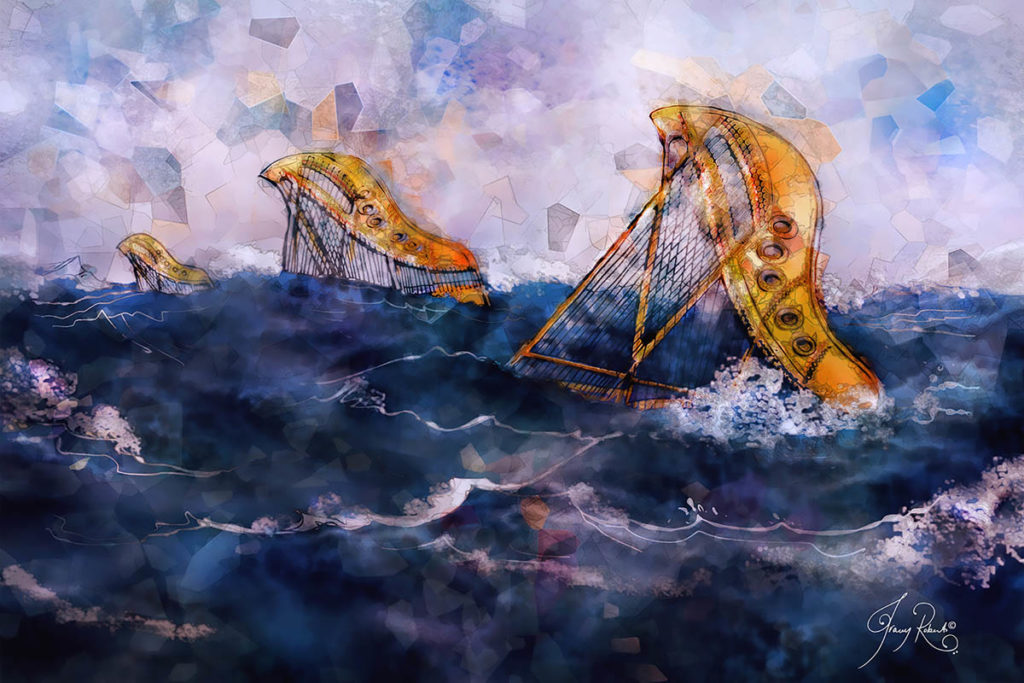
Antigua
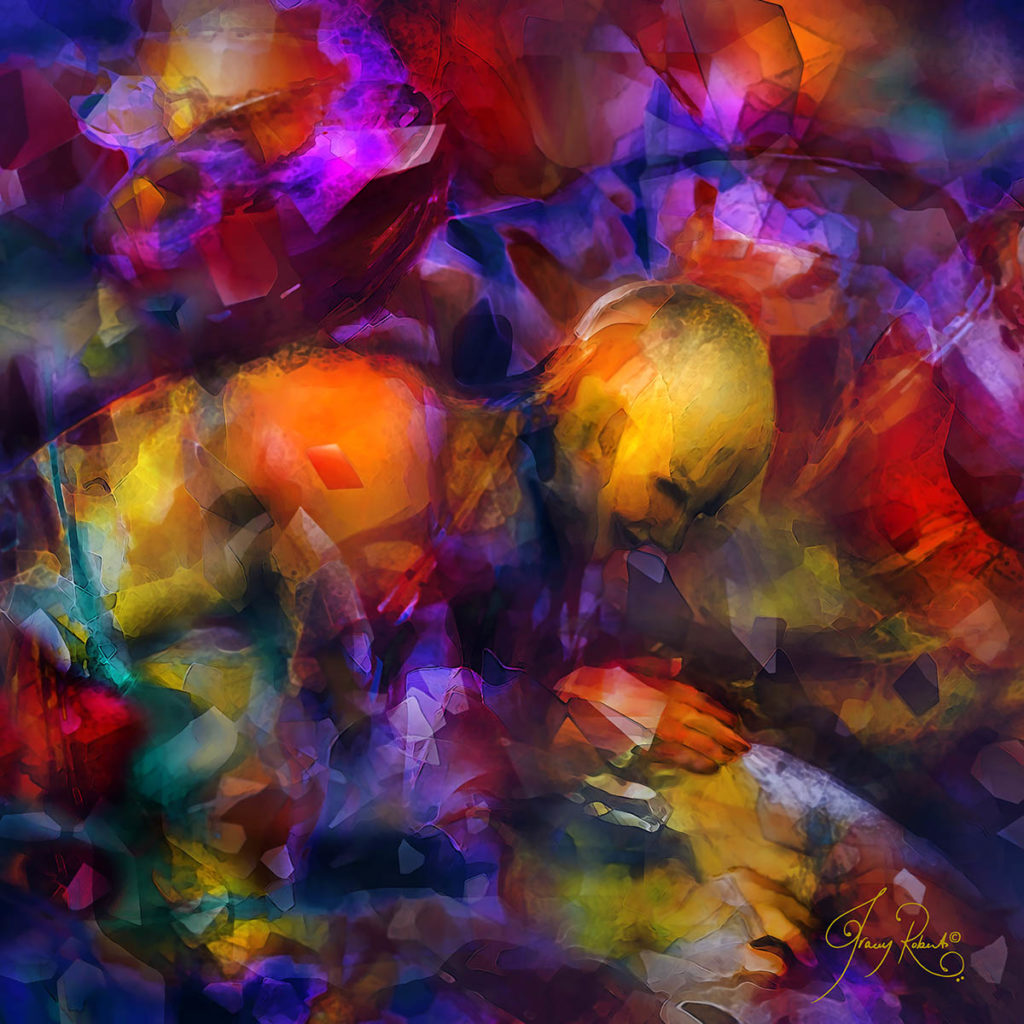
Tracey Roberts has music-colour synesthesia – an involuntarily co-joining of senses where she sees colours and shapes when listening to, creating and performing music – which she happily and effectively uses to create her artworks and her songs.
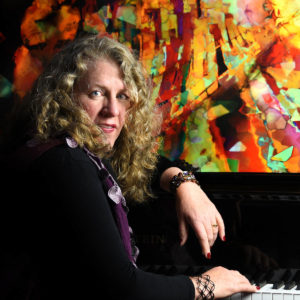
Photo by Michèle Bennett
“I was quite delighted to read all about it and to discover that some musicians I have always admired (Tori Amos and Billy Joel for example, and even Mozart – all pianists too, interestingly) also have this wonderful brain wiring! I’m also still discovering more of my musical colleagues who I’ve known for years have it too. It’s hilarious!
“It’s a wonderfully intriguing phenomenon, even though I’ve been familiar with it all my life, and I enjoy immensely the fact that I can now translate my particular brand of music-colour synesthesia into my art and combine it with the performance elements of my work, creating and sharing a completely fascinating and inextricably connected visual and performing experience.
“I LOVE it when people who discover I have this way of hearing and seeing music say to me ‘Oh, WOW – you’re one of THOSE!’ I actually feel quite blessed.”
www.traceyroberts.com
Your Story in Art
Commission Tracey to create, with your input, a visual depiction using her synesthesia of your own personal story encapsulated in a rich, colourful and meaningful piece of unique art.
Your Story in Art can be a portrait, a fantasy or collage of favourite things or something quite abstract and symbolic – a way of representing yourself in a piece of unique, personalised art.
WATCH A virtual tour of Tracey’s music garden and dome gallery where she creates her rich, complex musically themed artwork inspired by her music-colour synesthesia.
